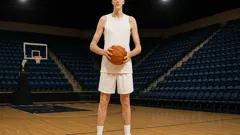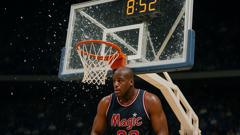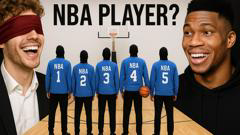Why is Darryl Dawkins remembered more for showmanship than stats?

What set Dawkins’ NBA legacy apart from other high-flying big men?
Buckle up. The rise and fall—and flamboyant sidestep—of Darryl Dawkins is a slam dunk in basketball myth and cautionary tale, all wrapped up in a sequined jacket.
A Legend Born in the Air: Dawkins’ Arrival
When Darryl Dawkins exploded onto the NBA scene in the late '70s, the league was no stranger to giants. But this guy? He moved at 6’11” like a guard. Think Shaq, minus the hardware, plus a disco flair.
Most big men labored. Dawkins soared—and sometimes, he crashed. Literally. Only two shattered backboards, but the legend endures, earning him nicknames like Chocolate Thunder and Dr. Dunk. Take that, gravity.
The Dawkins Mystique: Power, Flash, and a Bittersweet Resume
Fans lined up to watch his dunks, not his box score. Dawkins never made an NBA All-Star roster, despite fan campaigns. His best statistical season peaked at just 16.8 points per game (1983/84). Not bad, but not Moses Malone.
Drama? Always on tap. Dawkins performed for the crowd, slamming and naming dunks—who else claims to hail from the planet Lovetron?
"For all his gifts, Dawkins was showman first, champion never. Fourteen NBA seasons, three Finals, zero rings. But man, could he light it up when the moment called."
Wild, right? Dawkins was, as verified by Basketball Reference, often the Ninth Man among NBA centers of his era. Yet his highlights pack more culture than most MVP speeches.
Why Didn’t Dawkins Become a Superstar?
NBA lore loves potential unrealized as much as actual glory. Dawkins, straight from high school, never spent time in the basketball ‘universities’—no college for him. He was a gym rat (sometimes), but not the grind-til-you-bleed type. His coaches and teammates wished he’d matured faster, according to interviews on ESPN Classic.
Comparisons: Dawkins vs Malone
Moses Malone made his pro debut a year earlier, also skipping college. By his fifth year, Malone had an NBA MVP—Dawkins, meanwhile, was still splitting minutes. Moses wasn’t flashy; just relentless, churning out 25 points and 15 rebounds like clockwork. (Look up his 17.6 boards per game in ’79-80. Yikes.)
Meanwhile, Dawkins? He’d dunk for thunderous applause, then let others chase rebounds and hustle plays. It was almost performance art—a little bit Shaq, a little bit pre-Rodman, with wild suits and even wilder antics.
Peak Performance: Dawkins in the 1980 NBA Finals
But don’t let the flash fool you—Dawkins had his moments. The 1980 NBA Finals saw the best of him. While Dr. J sputtered and Kareem Abdul-Jabbar looked unbeatable for the Lakers, Dawkins kept Philly alive. Twenty-five, twenty-one, twenty-five points in consecutive games. Not bad for a ‘showman’.
Of course, consistency wasn’t his friend. Soon, Philly dumped him to clear cap space for (you guessed it) Moses Malone, who later led them to a title. There’s that NBA irony.
Encore and Epilogue: Artistry Over Grit
Post-Philadelphia, Dawkins delivered a playoff upset with the Nets in ’84, then went supernova against Milwaukee with three 30-point games. Sadly, injury and inconsistency checked in before Dawkins could turn hot streaks into a legacy.
And if you’re scouring basketball lore for his famous scuffle with Maurice Lucas in the ’77 Finals? Yes, it was loud—but didn’t change the result. Dawkins left his real marks with dunks, not fists (or stat sheets).
His style survives in every rim-rattler who ever grinned for the camera. Dawkins was a Top 10 NBA entertainer—neon suits, shattered glass, and proof that the NBA is as much about show as substance. Classic clutch moment—and classic what-might-have-been.








Comments